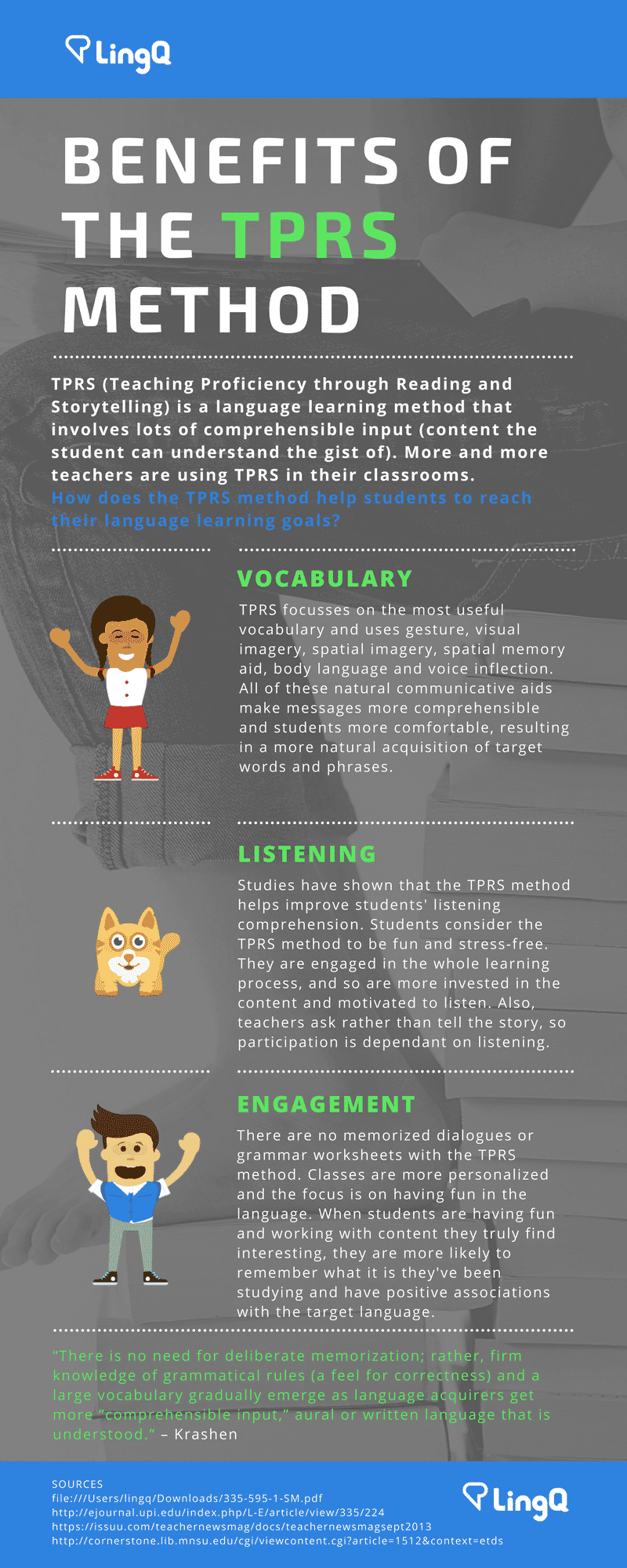The Benefits of the T.P.R.S Method
More and more teachers are using the LingQ system to help their students reach their language learning goals. We have teachers in Japan, the United States and Canada using the LingQ for the Classroom interface and reporting increased proficiency and engagement. It’s awesome!
The LingQ method promotes lots of reading and listening input, and so it works well in classroom settings where an input method is used. One such input method that is becoming increasingly popular in language classrooms around the world is TPRS.
What does TPRS stand for and how can it help students master their target language? This infographic has the answers:

Vocabulary
TPRS focusses on the most useful vocabulary and uses gesture, visual imagery, spatial memory aid, body language and voice inflection. All of these natural communicative aids make messages more comprehensible and students more comfortable, resulting in a more natural acquisition of target words and phrases.
Listening
Studies have shown that the TPRS method help improve students’ listening comprehension. Students consider the TPRS method to be fun and stress-free. They are engaged in the whole learning process, and so are more invested in the content and motivated to listen. Also, teachers ask rather than tell the story, so participation is dependant on listening.
Engagement
There are no memorized dialogues or grammar worksheets with the TPRS method. Classes are more personalized and the focus is on having fun in the language. When students are having fun and learning with content they truly find interesting, they are more likely to remember what it is they’ve been studying and have positive associations with the target language.
